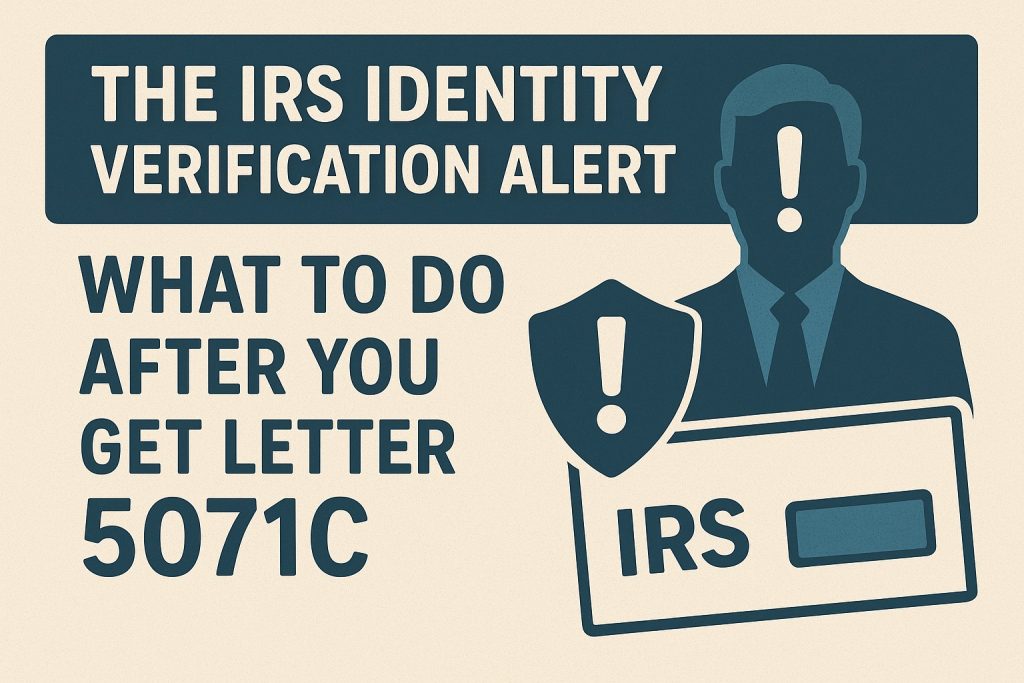Getting your tax refund is exciting—until the IRS sends youLetter 5071C, asking you to verify your identity before they process your return. While this might sound alarming, don’t panic! This letter is a normal part of the IRS’s efforts to protect taxpayers from identity theft and fraud.
Here’s an easy-to-understand guide on what Letter 5071C means and how to take action right away to keep your refund on track.

What Is IRS Letter 5071C?
Letter 5071C is a physical letter mailed by the IRS when they detect a tax return filed using your Social Security number (SSN) or Individual Taxpayer Identification Number (ITIN) that may not be legitimate. The IRS wants to confirm that you, not someone else, filed the return.
This letter is specifically about identity verification—it’s not an audit notice or a penalty letter. The IRS is making sure your personal information hasn’t been misused.
Why Did I Get This Letter?
- Someone may have filed a tax return using your SSN.
- Your return triggered IRS fraud detection filters.
- There are discrepancies or unusual activity compared to past filings.
- You are a potential victim of tax-related identity theft.
Ifyou didn’t filethe return or suspect fraud, this letter is a critical alert so you can stop further misuse.
How Do I Verify My Identity?
The IRS gives you two official ways to verify:
- Online Verification (Recommended)
- Visit the IRS Identity Verification Service website atidverify.irs.gov.
- You’ll need the14-digit code from your 5071C letter, your previous and current year tax returns, and supporting documents like W-2s or 1099s.
- Follow the secure prompts to confirm your identity quickly and easily.
- By Phone
- Call the toll-free number printed on your 5071C letter.
- Have your tax returns and documents handy; you’ll answer security questions to verify your identity.
The IRS never requests verification via email or unsolicited phone calls—legitimate requests are only through mailed letters.
What Happens After Verification?
- Once verified, the IRS resumes processing your tax return.
- Refunds typically take up to6 weeksafter verification for completion.
- If verification fails or is incomplete, your return could be rejected and flagged for identity theft investigation.
Tips to Make Verification Smooth
- Use theonline system firstfor faster processing.
- Gather documents in advance: last year’s tax return, current return, W-2s, 1099s, government ID.
- Call the IRS early in the day if you must verify by phone to avoid long hold times.
- Respond quickly—delays slow down your refund.
What If Someone Else Filed Using My Identity?
Call the IRS immediately using the number on the letter or the IRS Identity Theft Hotline (800-908-4490). You can request help and file aForm 14039, Identity Theft Affidavitto start resolving the issue.
Final Thoughts
Getting Letter 5071C might feel scary at first, but it’s actually a protective step for you. By verifying your identity through the IRS’s official channels, you ensure your tax return and refund proceed safely and securely.
Stay calm, act promptly, and protect your refund and identity. Your tax refund is still coming—it just needs a little extra verification first.
